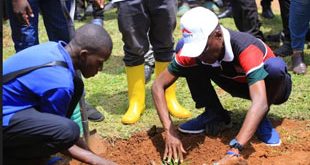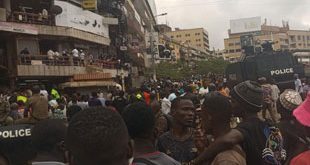
Kampala, Uganda | THE INDEPENDENT | At least 463 million children, a third of the world’s schoolchildren, are unable to access remote learning after COVID-19 shuttered their schools, according to a new UNICEF report released on Thursday as countries wrestle with their ‘back-to-school’ plans.
At the height of nationwide and local lockdowns, nearly 1.5 billion schoolchildren were affected by school closures. In Uganda, more than 15 million learners are still stranded in homes, with no hope in-sight for the reopening of schools this year.
Many of the schools especially in Kampala adopted remote learning tools using Zoom, Microsoft teams, Khan Academy and Google classrooms to ensure continuity in learning. These, however, require learners to have smartphones and, or laptops and an active internet connection, which remains a luxury to many households in the countryside.
The government invested in the printed study materials and lessons broadcast through Radio and Television to reach the population. But according to UNICEF, even when children have the necessary platforms, they may not be able to learn remotely due to competing factors at home.
The competing factors, UNICEF said, could include pressure to do chores, being forced to work, a poor environment for learning, and lack of support in using the online or broadcast curriculum, according to the report which outlines the limitations of remote learning and exposing the deep inequalities in access.
“For at least 463 million children whose schools closed due to COVID-19, there was no such a thing as remote learning,” said Henrietta Fore, UNICEF Executive Director, adding that the number of children whose education was completely disrupted is a global education emergency whose repercussions could be felt in economies and societies for decades to come.
The report based on a globally representative analysis on the availability of home-based remote learning technology and tools for children from pre-primary to upper-secondary levels, used data from 100 countries, which included access to television, radio and internet, and the availability of curriculum delivered across these platforms during school closures.
It highlighted stark inequalities across regions and within countries. Schoolchildren in sub-Saharan Africa were the worst affected, with half of all students not reached with remote learning. Schoolchildren from the poorest households and those living in rural areas are also at high risk of missing out during closures.
To respond, governments are now asked to prioritize the safe re-opening of schools when they begin easing lockdown restrictions, along with urgent investment to bridge the digital divide.
“When reopening is not possible, [we] urge governments to incorporate compensatory learning for the lost instructional time into school continuity and reopening plans,” added the UN agency, explaining that school opening policies and practices must include expanding access to education, including remote learning, especially for marginalized groups.
Alongside, education systems must be adapted and built to withstand future crises.
********
URN
 The Independent Uganda: You get the Truth we Pay the Price
The Independent Uganda: You get the Truth we Pay the Price


